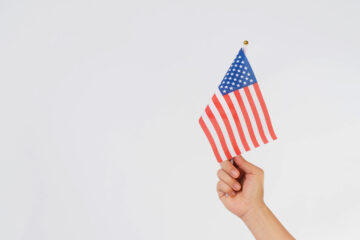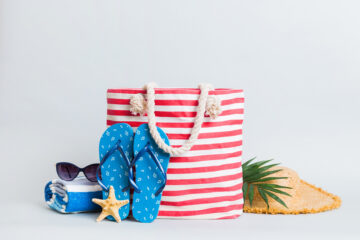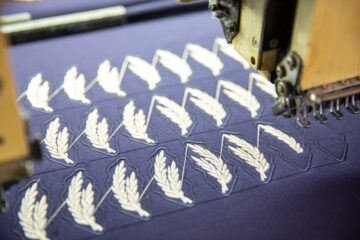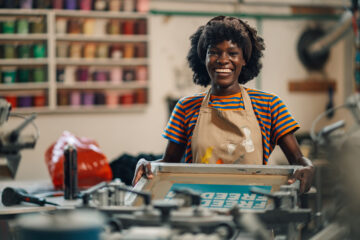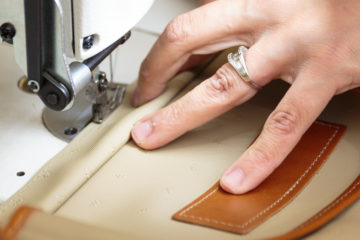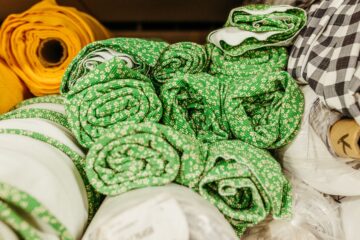Intellectual Property Protection in Fashion and Soft Goods
Intellectual property (IP) is crucial in safeguarding your creations and maintaining your competitive edge in the fashion and soft goods sectors. Understanding the different types of IP rights that can be applied to fashion items is vital to protecting your designs effectively. Here’s a detailed look at each kind of IP relevant to the fashion and soft goods industry:
Trademarks: Securing Your Brand’s Identity
Trademarks are essential in protecting brand identifiers such as names, logos, and even unique color schemes used in branding. In the fashion industry, trademarks are critical as they secure the elements that help consumers instantly recognize your brand, which is essential in a market where brand recognition directly translates to value.
- Examples in Fashion: Consider the iconic logos of major brands, like Nike’s Swoosh or Lacoste’s crocodile emblem, universally recognized symbols of their respective brands.
- Legal Tip: Since trademark registration is specific to countries, it is advisable to register in key markets where you plan to sell or distribute your products. You can file for a trademark through the United States Patent and Trademark Office (USPTO).
How to File for a Trademark in the United States:
- Conduct a Trademark Search: Use the USPTO’s trademark search system to ensure no existing trademarks could be confused with yours.
- Prepare the Required Information: Compile necessary details such as the name or logo you wish to trademark, a description of the goods/services, the classes they belong to, the filing basis (use in commerce or intent to use), your contact details, and a specimen showing the mark’s use if already in commerce.
- Choose the Application Format: Decide whether your trademark will be a standard character mark (text only) or a particular form mark (involving logos or stylized fonts), which requires submitting a JPEG of the design.
- File the Application: Submit your application through the USPTO’s Trademark Electronic Application System (TEAS). Choose between TEAS Plus, which is cheaper but requires using pre-approved descriptions, or TEAS Standard for more flexibility in description.
- Pay the Filing Fee: Fees range from $250 to $750 per class of goods/services, depending on the application type and the number of classes you register for.
- Respond to Office Actions: If the USPTO has questions or requires clarifications, they will issue an office action that you must respond to typically within six months.
- Monitor Publication and Opposition: Once preliminary approval is granted, your trademark will be published to allow any oppositions to be filed. If there are no challenges, your trademark will proceed to registration.
- Maintain the Registration: Keep your trademark active by filing maintenance documents and renewing the registration every ten years.
Consulting with a trademark attorney is highly recommended, particularly for navigating complex trademarks or addressing any issues that arise during the application process. This professional guidance can ensure that you fully comply with all legal requirements and successfully secure your brand’s trademarks.
Copyrights: Safeguarding Artistic Creations
Copyrights serve as a crucial form of protection for the artistic aspects of your items, including prints, designs, and specific functional artwork. This legal right is automatically secured when your work is created as long as it is original and fixed in a tangible form that can be perceived, reproduced, or otherwise communicated.
- Examples in Fashion: Copyright law can safeguard unique fabric designs, intricate patterns, or original graphics, ensuring your creative expressions are legally protected against unauthorized use.
- Legal Tip: Although copyright protection is inherent upon creation, registering your works with the U.S. Copyright Office provides additional legal leverage, such as the ability to claim statutory damages in the event of infringement.
How to File for Copyright in the United States:
- Complete the Application Form: Visit the electronic Copyright Office (eCO) Registration System on the U.S. Copyright Office’s website. Choose the correct form based on your work type (e.g., visual arts for fashion designs). Fill out the form, providing details about the work, its creators, and any relevant publication data.
- Pay the Filing Fee: The standard online registration fee is $45 for essential claims. Payment can be made via credit/debit card, electronic check, or through a pre-established Copyright Office deposit account.
- Submit a Copy of the Work: For most applications, you can upload a digital copy directly through the eCO system.
- Submit the Application: Double-check all details before final submission to avoid delays. Once submitted, you will receive a case number, which you can use to track the progress of your application.
- Mail Physical Copies (if required): Print out a shipping slip from eCO and send the necessary copies to the address provided. These will not be returned.
- Track Your Application: You can check the status of your application online using the case number. Processing times can vary, but they typically take several months.
- Receive Your Certificate: Upon approval, a registration certificate will be issued as proof of your copyright protection.
Importance of Registration
While not mandatory, registering your copyright offers significant advantages, especially in enforcing your rights. Registered copyrights allow for statutory damages and attorney’s fees in litigation, which can be a critical deterrent against infringement. For the latest and most detailed instructions, always consult the U.S. Copyright Office’s website and its circulars, as procedures and fees may change over time.
Patents: Protecting Innovations in Fashion
In the dynamic world of fashion, patents can serve as a vital tool for protecting new and unique inventions, encompassing both functional aspects and design elements of products. Understanding the types of patents and how to secure them can provide a significant competitive advantage.
Types of Patents in Fashion
- Utility Patents: These are granted for new inventions or functional improvements on existing products. For example, a newly engineered type of zipper or an innovative fabric treatment falls under this category.
- Design Patents: These protect the ornamental design of an item, focusing on aesthetics rather than functionality. A design patent could protect a novel pattern or the unique shape of a handbag.
Examples in Fashion
- Utility Example: A new type of breathable, waterproof fabric that enhances the functionality of outdoor wear.
- Design Example: A distinctive shoe heel shape that is non-functional but visually unique.
Legal Tip
Patents, particularly in the fashion industry, require detailed technical descriptions and are complex, often necessitating the services of a professional. It is recommended to engage with a patent attorney who specializes in the fashion sector to navigate the filing process with the United States Patent and Trademark Office (USPTO).
How to Find a Patent Attorney
- Start with the USPTO: Visit the USPTO website, which maintains a comprehensive list of all active patent attorneys and agents registered to practice before it. You can search this directory by various criteria, such as name, firm, or location.
- Check Legal Directories: Utilize respected legal directories like Martindale-Hubbell, which provide ratings and reviews from clients and peers.
- Evaluate Qualifications and Experience: Confirm that the attorney is registered to practice before the USPTO, a prerequisite for filing patents, and assess their experience, especially in handling fashion-related patents.
- Assess Communication and Approach: You must feel comfortable with the attorney’s communication style. Consider setting up an initial consultation to see if they explain the patent process clearly and whether their approach aligns with your needs.
- International Considerations: If your fashion products are to be marketed globally, ensure the attorney has experience with international patent filings and can advise on protecting your inventions in key markets abroad.
By carefully selecting a qualified patent attorney who understands the unique aspects of the fashion industry, you can effectively safeguard your innovations, ensuring they contribute to your brand’s long-term success and distinctiveness.
Trade Secrets: Protecting Your Competitive Edge in Fashion
Trade secrets are a vital component of intellectual property protection that covers a broad range of confidential business information. These can include anything that provides your company with a competitive advantage and is not generally known to the public. Protecting trade secrets is crucial in the fashion industry, where innovation and exclusivity often drive success.
Trade secrets encompass a variety of information, including
- Manufacturing Processes: Exclusive methods used in the creation of products.
- Design Techniques: Specific techniques in the design process that are unique to your brand.
- Supplier Lists: Contacts and relationships with suppliers that offer advantageous terms or exclusive materials.
- Client Databases: Information on clients that can include preferences, purchasing habits, and personal data, which are invaluable for marketing and sales strategies.
Examples in Fashion
- Exclusive Manufacturing Techniques: A proprietary method for treating leather that makes your products more durable than competitors.
- Unique Fabric Treatments: Processes developed in-house to give your fabrics unique qualities, such as enhanced colorfastness or waterproofing.
Legal Tips for Protecting Trade Secrets
- Non-Disclosure Agreements (NDAs): Ensure that agreements with employees, suppliers, and partners include robust non-disclosure clauses. These agreements are crucial in legally binding them to confidentiality.
- Access Control: Limit access to sensitive information to only those who need to know. This helps minimize exposure and maintain confidentiality.
- Regular Training: Conduct regular training sessions with staff to reinforce the importance of keeping trade secrets confidential and the consequences of their disclosure.
Practical Measures to Safeguard Trade Secrets
- Document Handling Protocols: Implement strict protocols for handling sensitive documents and data, including digital security measures like encryption and physical security measures like secured storage areas.
- Exit Interviews: Conduct interviews with departing employees to remind them of their obligations under NDAs and to ensure they return all documents containing trade secrets.
- Monitor and Audit: Regularly monitor and audit the use and protection of trade secrets to ensure compliance with your security policies and identify potential breaches early.
Protecting trade secrets in the highly competitive fashion industry can provide a significant edge by safeguarding your unique designs and processes. Implementing a robust system of legal and practical measures to protect these valuable assets is essential. By ensuring that trade secrets remain confidential, you can maintain your market position and innovate securely.
Combining IP Protections in Fashion
A strategic approach to safeguarding the various elements of a fashion item is to combine intellectual property (IP) protections. Each type of IP protection covers different aspects of your creations, providing a comprehensive shield against infringement and maintaining your brand’s value.
- Patents: Protect the functional aspects of a fashion item, such as a new type of closure system or a novel material composition.
- Trademarks: Safeguard logos, brand names, and other identifiers that distinguish your brand from competitors.
- Copyrights: Cover artistic aspects, such as unique fabric patterns, original designs, and even certain types of fashion photography.
Strategic Use of IP Protections
Leveraging a strategic combination of intellectual property (IP) protections enables designers and companies to safeguard their creative outputs thoroughly. For instance, the overall design of a new handbag may be secured through a design patent, which protects its unique structural features. The brand’s distinct logo, used prominently on the bag, would typically be shielded under trademark law, ensuring that the brand identity is exclusively associated with its products. Additionally, any unique graphic designs featured on the bag are protected by copyright, which covers artistic elements such as prints and patterns. This multi-faceted approach to IP protection ensures that each component of a fashion item is legally secured, minimizing the risk of infringement and enhancing the brand’s competitive edge in the market.
Additional Steps to Protect Your Designs
- Monitor the Market: Regularly check for potential infringements manually or through IP monitoring services.
- Enforce Your Rights: If an infringement occurs, seek legal counsel to discuss enforcement strategies, including cease-and-desist letters or litigation.
Securing the intellectual property of your fashion and soft goods is not just about legal protection; it’s about establishing a foundation for your brand’s integrity and longevity in the market. Regularly revising your IP strategy as your business grows and the market evolves will help protect your creative assets.
Softline for Start-Ups Resource Guide
Building a Brand in the Soft Goods Market
Intellectual Property Protection in Fashion and Soft Goods
Concept to Prototype: Softline’s Design and Sampling Services



